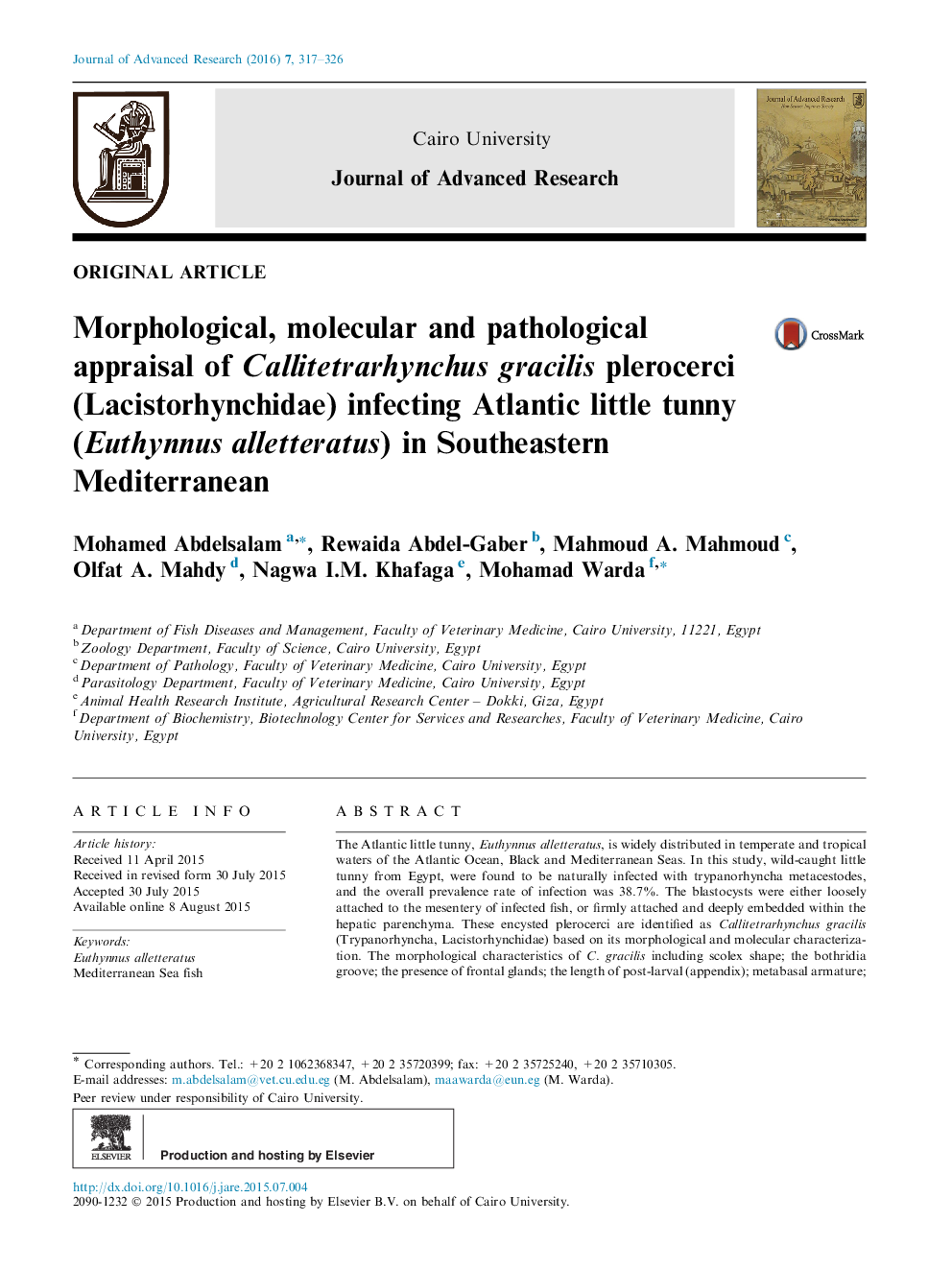| Article ID | Journal | Published Year | Pages | File Type |
|---|---|---|---|---|
| 826198 | Journal of Advanced Research | 2016 | 10 Pages |
The Atlantic little tunny, Euthynnus alletteratus, is widely distributed in temperate and tropical waters of the Atlantic Ocean, Black and Mediterranean Seas. In this study, wild-caught little tunny from Egypt, were found to be naturally infected with trypanorhyncha metacestodes, and the overall prevalence rate of infection was 38.7%. The blastocysts were either loosely attached to the mesentery of infected fish, or firmly attached and deeply embedded within the hepatic parenchyma. These encysted plerocerci are identified as Callitetrarhynchus gracilis (Trypanorhyncha, Lacistorhynchidae) based on its morphological and molecular characterization. The morphological characteristics of C. gracilis including scolex shape; the bothridia groove; the presence of frontal glands; the length of post-larval (appendix); metabasal armature; the existence of ‘Chainette’ and satellite hooks of different size were studied and described by Light and Scanning electron microscope. The phylogenetic analysis of lsrDNA gene of plerocerci confirmed the identification of the species to be deeply embedded in genus Callitetrarhynchus. The histopathological examination revealed severe pathological changes in the affected organs, including necrosis, inflammatory reactions, fibrosis and migratory tracts of the parasitic larvae together with marked visceral organs adhesions. To the best of our knowledge, this is the first report describing the detection of C. gracilis in little tunny collected from the Abu Qir landing site in Alexandria, Egypt.
